Pomerol 2018
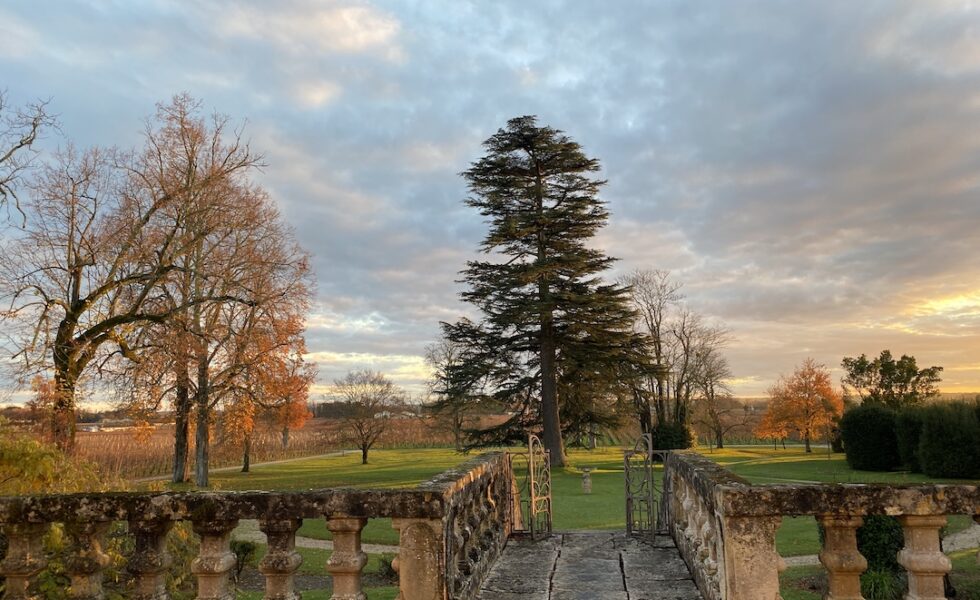
Some stellar, some not as much
By Panos Kakaviatos for wine-chronicles.com
24 January 2021
Some very good to great wines, but in some cases, I could not help but detect the ether of the vintage in some. Top wines – from Trotanoy and Pétrus, to Petit Village and Gazin – have deep clays that kept things fresh. One finds seductive tannins with much impressive density. Others seem powerful, which is a very good sign for aging. The density of the best Pomerols is superior to densities from 2016 or 2019. For example that of Petit Village is a good example of a very successful 2018 Pomerol. I tasted the wines of Moueix with Jane Anson in Bordeaux, and others – including Pétrus, Vieux Château Certan, Evangile and La Conseillante, at the estates. At La Conseillante, Jane Anson and I tasted the estates that make up the group Pomerol Seduction. And I tasted Petit Village (and again Beauregard) at home while discussing the vintage via ZOOM. Alas, I did not get a chance to re-taste Lafleur or Eglise Clinet. Tasting notes in alphabetical order.
Château Beauregard – The rear view from this estate, in featured image here, proves its name. Although with some sandy, hot gravel soils, the estate crafted excellent wine in 2018. The cooler clays helped as did the fine Cabernet Franc, making up 30% of the blend. And I have the feeling that general manager Vincent Priou – who calls 2018 the best vintage ever at this estate – and his team had a Midas Touch. Indeed the density and tannic edge and power impress. The wine maintains a certain “imposing aspect” that I got from barrel, but in a good way without austerity or drying tannins. And there is lovely mid palate juiciness and cool wintergreen mint aromatic aspects. Aged in 50% new oak, the wine clocks in at 14.05% alcohol, although the label indicates 14.5, no doubt for US tax authorities. 94+
Château Bourgneuf – Blending 80% Merlot and the rest Cabernet Franc, I love the succulent nose of opulent red and dark fruit! The palate also exudes ripe fruit and freshness, although one gets a slight drying sensation on the finish. 92
Château Certan de May – One of my preferences from the Moueix stable, with pleasing fresh rose garden aromas. As experienced from barrel, initial sweetness on the palate makes you wonder about the vintage, and it is, after all, 14.5% alcohol with lots of Merlot (60%). Thank goodness for the Cabernet freshening effect, given 35% Cabernet Franc and 5% Cabernet Sauvignon in the blend. I get a sense of crushed mint on the finish, too, to counter this initial “glucose” impression. In short: lovely wine with nuance and some grip for the longer haul. 94+
Château Clinet – This blend of 85% Merlot and the rest Cabernet Sauvignon, aging in 75% new oak, seems to have become more powerful and less especially juicy. Maybe it has just closed down since being bottled? In any case, there is seriousness that appeals along with graphite and tobacco, as if the 15% Cabernet Sauvignon gains the upper hand for now. Ripe red fruit, sure, and the tannins come across refined and distinguished. But a sense of power dominates, to the extent that it needs about 10 years cellaring to begin to be properly ready to drink. 14.5% 95+
Château Clos du Clocher – Better from bottle than from barrel, but in a muscular manner: rather Pauillac like, this blend of 70% Merlot and the rest Cabernet Franc clocking in at 14.5% alcohol. Ripe red and blackberry fruit, plum and some violet aromatics prelude a full-bodied and rather dense palate. While it may lack the charm of La Conseillante, I like its visceral power as a long-term wine. 94+

Which seduces the most? Tasting of the members of Pomerol Seduction at Château La Conseillante
Château La Conseillante – Given the high tannic index at 95, we should not have been surprised that the wine was a bit closed down upon its opening two hours earlier. Director Marielle Cazaux also explained that it had been bottled under nitrogen oxide this year, which added to a reductive aspect. The aging of this blend of 80% Merlot and 20% Cabernet Franc took 16 months in 70% new oak, 27% one-year old oak and 3% amphorae, the first vintage to use them. I love the freshness and how well it has integrated the oak. Floral and fruit aspects reveal elegance and charm. The wine needs another year or so to really begin to express itself, but she was kind to give me the rest of the wine to share over dinner at Cheval Blanc, and what a fascinating comparison with Cheval Blanc 2018! In any case, La Conseillante has a very successful Pomerol in this vintage, but I wonder whether the 2016 and 2019 vintages will surpass it. The alcohol clocks in at 14.2% but the label will say 14.5%. 97
Enclos Tourmaline – What a subtle nose of violets and ripe fruit. I like the mid palate sap with vintage character density and serious “muscular” tannins, no drying on the long finish. From vines grown on four parcels of the Pomerol plateau, some including the famous blue clay soils of Pomerol. Only 3,000 bottles produced each year. The alcohol is 14.1% (even if 14.5 on the label). Not inexpensive at €120 euros retail, but a darn good “insider” purchase. 94+
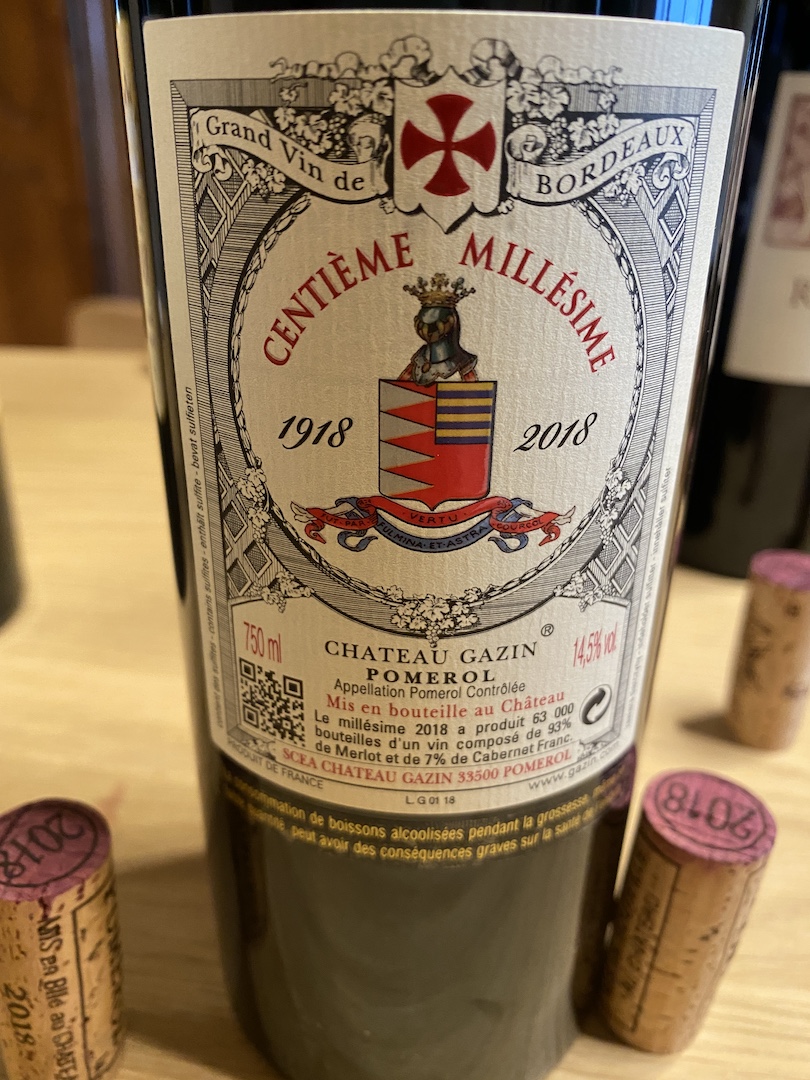
An anniversary bottle, a superb vintage for Gazin.
Château Gazin – A excellent Pomerol, and I say wow to this 2018 from bottle: Lovely, serious and sumptuous. There is some “vocal tannin” on the back end, but it should get resolved with cellaring. Blending 93% Merlot and the rest Cabernet Franc, the nose comes forth with floral aspects, but only after 20 minutes in glass (the bottle was opened a few hours before the tasting). The palate displays impressive density and the somewhat “held back” aspect from barrel not as present from bottle, as the aging in 50% new oak has opened the wine up enough to be quite impressive: a fine expression of terroir, which includes deep, freshening clay: needed in 2018. The label indicates 14.5% alcohol, with a freshening pH of 3.69. 95
Château Grave – I usually love this wine, which blends 85% Merlot and the rest Cabernet Franc, but it reflected the attenuated excitement I felt from barrel. It is savory wine and in that respect, a success, but one senses also some noticeable extraction of tannin, which felt a bit hard from barrel and now comes across a bit drying on the finish. Could the gravels have been too hot this vintage? I would probably go for the 2016 vintage instead of this one. 89
La Gravette de Certan – As far as second wines go, this is one of the very best in 2018 that I tried in Bordeaux from bottle. Made from vines all under 20 years old, the blend of 90% Merlot and 10% Cabernet Franc is both supple and refined. 33% of the estate’s production goes into making this wine, which was aged in 30% new oak. With 14.5% alcohol, it has a lovely, rose-like aroma and co-owner Guillaume Thienpont suggests a drinking window of between 10-15 years. 93
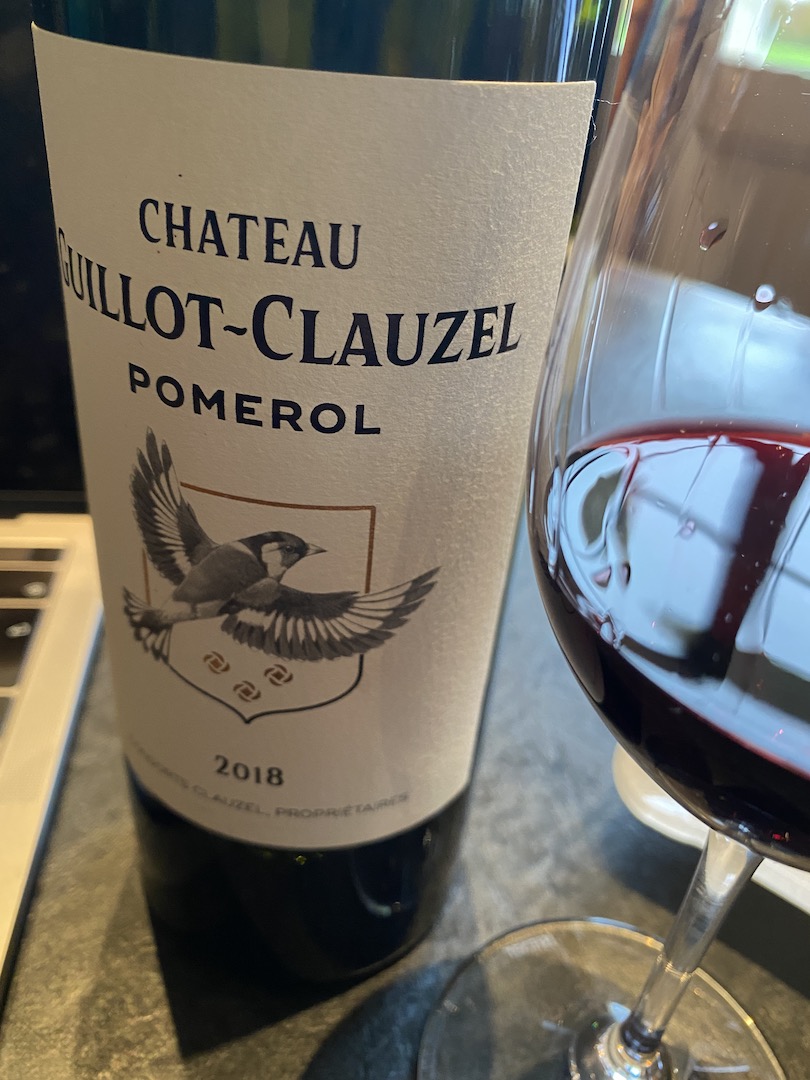
Worth tasting and purchasing!
Château Guillot-Clauzel 2018 – Tasted at Château Vieux Château Certan with father and son owners Alexandre and Guillaume Thienpont, this 2.5-hectare estate, with 2 hectares of vines, lies close to Château Trotanoy and just above Château Nenin. Blending 70% Merlot and 30% Cabernet Franc, it exudes lovely aromatics, floral and fruit driven and the palate has fine structure, subtle opulence and mint chocolate freshness coming from the Cabernet Franc. Clocks in at 14.5% alcohol and was aged in 50% new oak. As Pomerol prices reach Burgundian proportions (earlier vintages of this wine are now available for about €45), the 2018 sells closer to €70, but still not too bad a price/quality ratio. 94+
Château Hosanna – I underestimated from barrel this blend of 70% Merlot and 30% Cabernet Franc, which comes from the former Château Certan Giraud estate bought by the Moueix back in 1999. The terroir of red gravel lies over the famous clay on “crasse de fer”, known for producing wines of great elegance, complexity, and power, and 2018 is no exception. The old Cabernet Franc vines, of which a significant portion dates from 1956, contribute complexity. The wine exhibits lovely, refined tannin. And the high alcohol of the vintage is very well managed, leading to an overall sense certainly of ripe plum but also graphite and tobacco leaf. Long finish from a top Pomerol. 97
Château Lafleur Gazin – I am slightly let down after the promise of the barrel tasting, which exhibited very fine aromatics. Sure, you get plump and pleasing fruit from the 100% Merlot on the mid palate, but raise a red flag for the alcohol, which seems to dry up the finish. 91
Château La Fleur Petrus – Here we come to a fabulous terroir, and I wine that I appreciate for its great floral characteristics and freshness. But you get a “bigger” style in 2018, from this blend of 93% Merlot, 5% Cabernet Franc and 2% Petit Verdot. There is a sense of being on the very edge of getting too ripe. The terroir is superb as it includes deep clay and gravel, so there is seriousness from fine palate density, and some elegance and breadth. The finish, long and impressive. Let’s revisit in 10 years to see how it evolves in bottle. 94+
Château Lagrange – Fulfills its promise from barrel with an impressive nose of ripe fruit, plum, and some serious graphite. The deep clays certainly maintain freshness. And yet while it is a juicy wine on the mid palate, you do sense the 15% alcohol, immediately realizing that this is no 2016, lacking the superior freshness of that vintage. 92
Château Latour à Pomerol – Another wine rather living up to the barrel tasting, showing off fine, ground chocolate and ripe dark fruit aromatics. While the gravel more than insured ripeness, the cooler deep clays from this estate dealt with the hot and dry summer nicely. Indeed, one finds nuance and freshness. 95

The 2018 seems more pleasurable than the 2019 at this early stage.
Château L’Evangile – I liked the wine’s fine density, with smooth and rather silky tannins from barrel, and I love all of that even more from bottle! Blending 80% Merlot and 20% Cabernet Franc, the wine is rather big, but it has freshness, even with the lofty pH of 3.9. I just focused on the gorgeous and velvety texture, round and suave. Indeed, the estate includes parcels with cool clays, too. All the wines on clay have more body, with velvety and natural roundness, explained recently named director Olivier Trégoat, with whom I tasted the wine in Pomerol. Nonetheless, he told me about a new project to reduce the effects of natural acids in the soils of the estate, which end up yielding high pH levels. With limestone, you have naturally low pH levels, but that is not the case of the gravel over clay soils at Evangile. “We will try to re-orient the soils, in an organic manner to reduce the effect the acidity there”, he said. 95
Château Mazeyres – Better than it was from barrel, this blend of 66% Merlot, 29% Cabernet Franc and the rest Petit Verdot, exhibiting not only finesse and elegance, but also concentration and gourmand aspects. The aging in 20% new oak, 45% one-year-old oak and 35% in tanks and concrete egg shaped tanks has softened the tannin enough for the wine to be ready at a youthful stage. 93+
Château Nenin – As experienced from barrel, this has serious pencil lead and graphite on the nose. Very ripe and refined with fine texture and subtle expressions on the palate. You get 14.5% alcohol but not the obvious vintage warmth from some of the other wines assessed. “We harvested quite early”, director Pierre Graffeuille said, to maintain freshness. There is tannic bite on the finish, but fine-grained tannin, so that the bite is more a padded, rather than brick wall. Give it five years in the cellar before opening. 94+
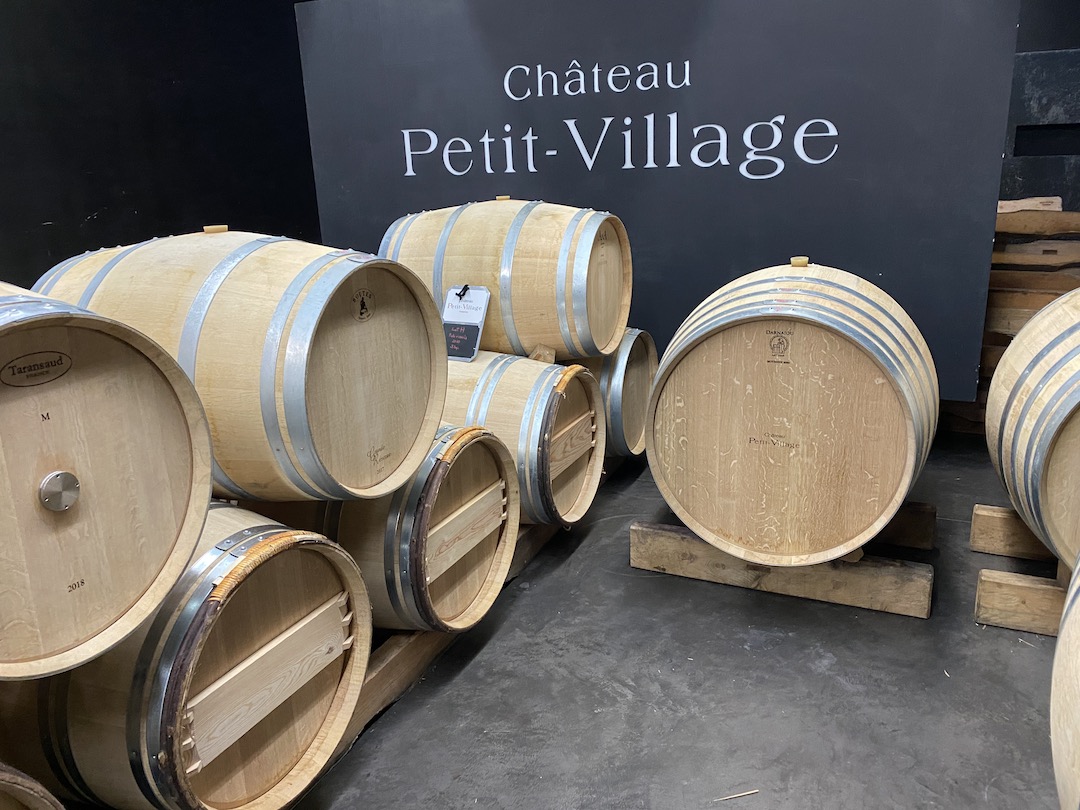
Some larger oak barrels to reduce wine contact with oak during aging before bottling.
Château Petit Village – A grand success. At 14.3% alcohol with fine balancing freshness and acidity: much coming from the 30% Cabernet Franc picked from vines on deep clay. For director Diana Berrouet Garcia, 2018 is her best vintage since she began in 2015: “2018 has less obvious alcohol (and more acidity) than 2015, and more density than 2019 and 2016”, she remarked. Indeed, the wine shows concentration; the berries were very concentrated at harvest with some juice lost due to “evaporation”, she said. The final blend of 72% Merlot, 20% Cabernet Franc and 8% Cabernet Sauvignon has a juicy, rounded mid palate with depth, leading to a clean, pure, bright, fruit driven finish. The tannin is already sur mesure so just 40% new oak was used to age the wine. It will be interesting to compare the 2019 with the 2018. “I agree we have greater freshness in 2019, but I think we have more substance in 2018,” Berrouet Garcia remarks, “and I think it will be a better vintage in five years.” 3.7 pH. 96
Château Pétrus* – The wine again makes the Top Ten of the vintage, but that shouldn’t be a surprise. I like how it has developed since the barrel tasting in the spring of 2019, with increased elegance and classicism throughout: like other top wines in 2018, it defies the vintage’s solarity, coming across as a “timeless classic”, like Lafite Rothschild. Spending a good 30 minutes with director Olivier Berrouet, we recalled how lovely the 2016 vintage is and Berrouet says that 2018 is “close” in terms of quality and the quality of tannin. Both share a subtle sense of volume, with aromas and palate echoing each other with persistence: floral aspects, baked cherry, fine dark chocolate, fresh ripe plum, a bit of white pepper on the finish among other aromas conjuring “aromatic length”, reflected in the layered and nuanced palate. I like how the palate is full bodied yet also refined and subtle at the same time, with a long lasting finish that makes you want the glass to be a bottle just for yourself. Of course better to share with one special person, but not more than that! 99
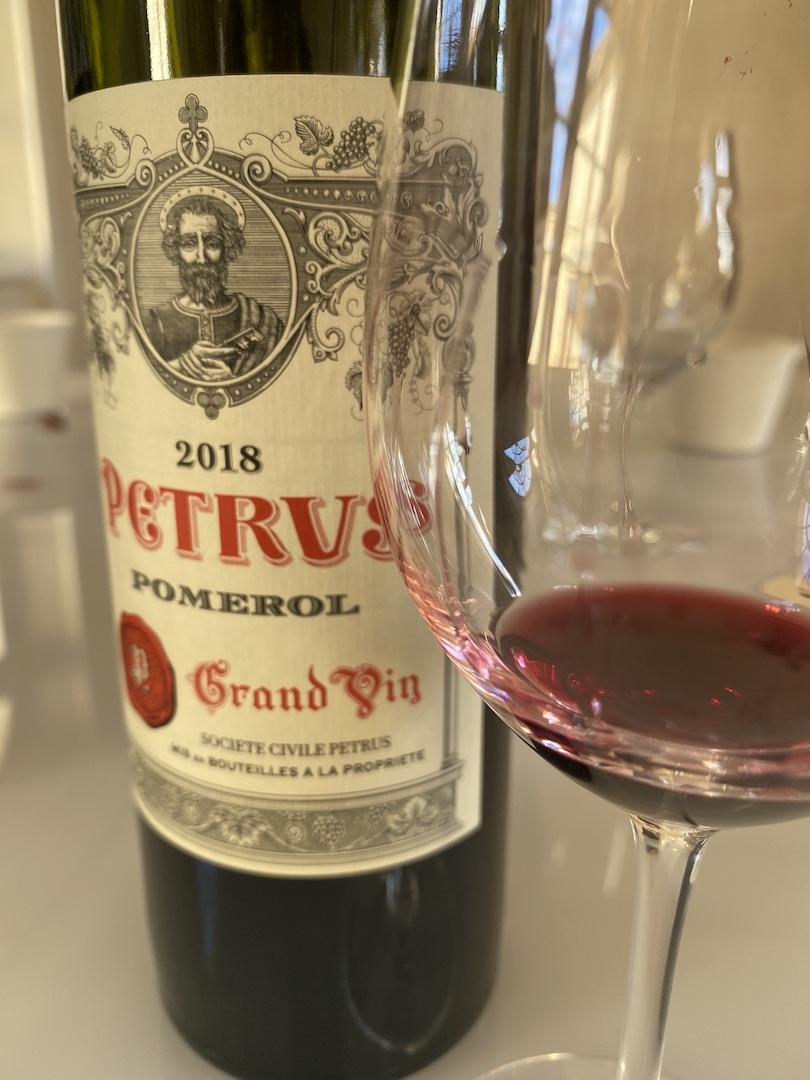
Not quite as nearly perfect as the 2005, but close.
Château Plince – This blend of 72% Merlot and the rest Cabernet Franc exudes pleasing fine espresso notes, with ripe fruit and smooth tannin. However, you get a sense of alcohol lurking in the background. Thank goodness for wintergreen freshness on the finish. 92
Château La Pointe – This blend of 74% Merlot and 26% Cabernet Franc impresses with mid palate the juiciness, but I cannot help but prefer the 2016 vintage, with more vivacity, as the finish drys out just a tad. Could it be that the sandier soils from this estate had a harder time with the water stress and dry heat? The 2018’s fine density, however, is promising. 14.5% alcohol. Drink over the next 15 years. 92+
Château Rouget – This blend of 85% Merlot and the rest Cabernet Franc conveys fine mid palate sap but seems just a tad heady, reflecting the high 2018 octane. But overall, it seems rather open knit and accessible albeit lacking the vigor and focus of a vintage like 2016. Aged in 30% new oak. 92
Château Trotanoy* – Power and glory! From barrel, I was calling this blend of 90% Merlot and 10% Cabernet Franc a “Right Bank Montrose” and it has proven to be that, and then some. This has power, nuance, freshness… and length. The final blend in bottle ended up being 100% Merlot and one of the top wines of the vintage that – like Cheval Blanc and Lafite – transcends the vintage nature. Orange rind freshness on the long finish. This is gorgeous. Tasting with Jane Anson, we both agreed how special this wine is. Could it be the cooler western facing slope? Of course at its highest point of exposure, the soil contains a good proportion of gravel, but it gets progressively more dominated by clay as the elevation declines and under this clay is a subsoil of red gravel and an impermeable layer of hard, iron-rich soil known as “crasse de fer”, which certainly keeps things fresh. 98+
Vieux Château Certan – An impressive vintage here, with noticeable tannin yet ripe and refined, although quite present and demanding at least 10 years of cellaring before it will be ready: just enough time to enjoy the more than admirable second wine. I get an almost Left Bank graphite aspect, with dark red fruit and hints of fine Ceylon tea. If you open it early, be sure to aerate the wine, and then be ready for a rather powerful expression. Borne of drastic selection, this blend of 70% Merlot and 30% Cabernet Franc clocks at 14.4% alcohol. It was a “very dry vintage” remarked Alexandre Thienpont. “We had to get rid of raisined grapes”, he explained, from the estate’s 23 different parcels. “It was important to avoid the solarity of the vintage while also properly waiting for the tannins to ripen.” The wine enjoyed a healthy 40 hectoliters per hectare in yield, with freshness coming from cooler aspects of the Cabernet Franc (the pH is 3.75). Indeed, 2018 was “more a Cabernet Franc vintage”, Alexandre remarked. Son Guillaume chimed in: “Cabernet Franc was essential”. 97+
Château Vieux Maillet – Although not quite as inspiring on the finish, as experienced from barrel, an excellent showing. Like other Pomerols from this vintage, this blend of 73% Merlot, 19% Cabernet Franc and 1% Cabernet Sauvignon displays a tannic edge on the palate. I like the quality of the tannins, and even if you get some 2018 “warmth”, an underlying serious tone, reflected in the structure, seems fit for longer cellaring. And I like the focused finish, even if not as opulent as, say, Gazin or as long as Clinet. Aged 14 months with 40% new oak. Did you know that Maillet means “gavel” in English? So you can call it Old Gavel! 93
 Wine Chronicles
Wine Chronicles
Share This